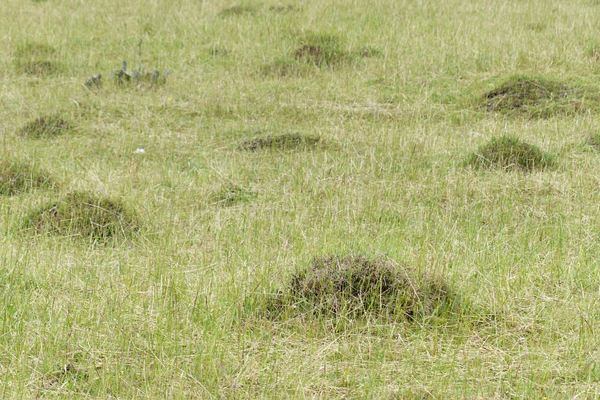For homeowners, ants are still one of the most common insects that drive them to request services from pest management professionals. In a recent survey by the National Pest Management Association, carpenter ants, odorous house ants, and pavement ants were the three most cited as structural and nuisance pest ants. In Central Texas, fire ants are also a major problem.
Management can be complicated because elimination of the queen is important to completely get rid of the infestation. Foragers represent only a small fraction of the entire colony, and often this is the only group of ants that homeowners observe. In reality, there may be many, many more ants on your property than what you can see!
Common Ants Found in Your Lawn
Carpenter ants pose additional concern to homeowners because these ants can be structurally damaging. Carpenter ants like many ants feed on honeydew producing insects such as aphids. These ants will forage outside the structure and will find avenues to nesting sites within structures such as under insulation, in voids, in crawlspaces, or in attics.
Odorous house ants have colonies with many queens and many homes, which are often temporary and will be found under pieces of wood or debris in landscaping. As with carpenter ants, these ants will forage on honeydew from aphids living in vegetation. If there are landscaping problems and trees, shrubs, or plants are in contact with the structure, this will provide an easy access between the structure and foraging arenas.
Pavement ants also have many queens but these ants will nest under rocks or pavement. Because these ants nest underground and have multiple queens, there have been problems with management. Often, they aren’t detected until they have seriously infested a lawn.
Fire ants make tunnels underground, and they are usually connected into one big colony. What most people see are the mounds —usually no more than an inch high or a couple of inches in diameter. But there can be many other areas you can’t see, as it may take 3-4 years of building before you can see a mound. They can get up to 2-3 feet high in undisturbed areas. Fire ants are especially a nuisance because if they bite you, they will leave a painful welt or blister that can last several days.
Messy Lawns are Good Homes for Ants
In general, ants like to make homes in areas where lawns aren’t well groomed — in areas with tall grass, under pieces of wood and debris, and among unkept shrubbery and vegetation that attracts aphids, which the ants feed on. So maintaining your lawn is about more than making it visually appealing…it’s about keeping the ants (and the insects that attract them) out of your yard…and ultimately out of your home!
On a radio episode about integrated pest management, Bob Vila says, “Knowing what insect pests look like at every stage of their development and checking for them often is much better for you and your environment than blanketing your yard with toxic pesticides.”
Learn more about our integrated pest management services or call us at (512) 930-0897 to schedule a free estimate.


